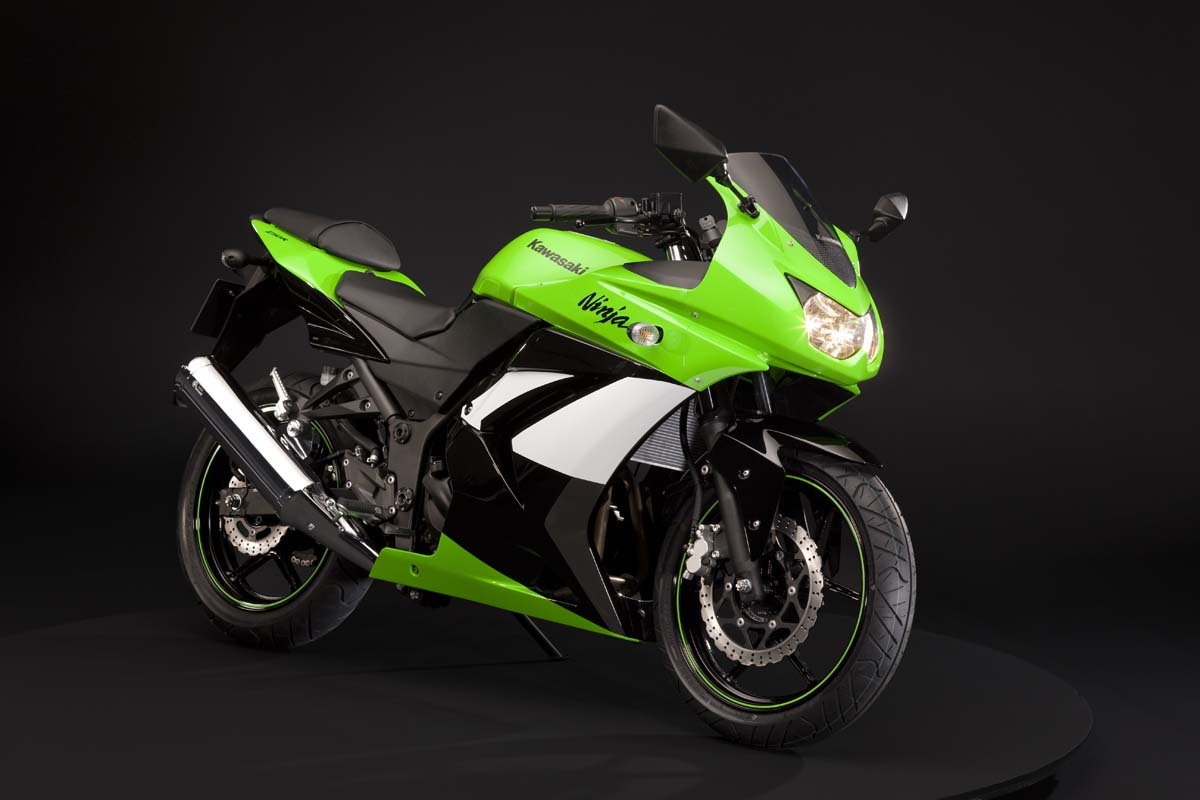Kawasaki Ninja 250
It looks like a hypersport, but its seating position is as comfortable as a standard’s. It’s named after a line of superfast bikes, but is sedate enough for beginners. Its build quality is high, but its price is about as low as it gets.
But then, does Kawasaki’s Ninja 250R even need an introduction? Since receiving a stylistic and functional makeover in 2008, which you can read about here, the Ninja has continued its legacy as a top seller for Team Green.
To those of us who’ve known this little screamer for a while now, it’s not a mystery. Perhaps the only mystery in our minds is why the other Japanese OEMs have been content to let Kawasaki own this segment for the past couple of decades or more, but we’ll save that for the sidebar.
Kawasaki Ninja 250Motivated by a smooth-running DOHC 249cc parallel-Twin pushing a peak of 25.4 hp to the rear wheel, this 374-lb machine offers enough power to stay ahead of around-town and suburban traffic, and will top out around an indicated 100 mph or so.
Its twin Keihin constant-velocity carburetors aren’t as sophisticated as the fuel-injection on the Euro version, and the twin carbs are jetted lean to pass emissions regs. This results in an engine that needs to be warmed up before it’s able to be ridden away, and low-end throttle response is a bit soggy.
“It’s definitely on the lean side in the low end and midrange,” says Kerry Bryant, who has tuned many Ninja 250s as owner of Area P, a SoCal-based shop that also manufactures exhaust systems. “Changing/adjusting the jetting can make a dramatic improvement in throttle response, even with the OEM exhaust system.”
Once warmed up after a few minutes, the machine will accelerate from a standstill with the revs at around 3,000 rpm while slipping the clutch. Carburetor tuning is not a pre-requisite, but to make it run the way it could, it is something we would do.
This article about the latest news from the automobile, free manual, motorcycle, phones, entertainment, Tutorial and other
Wednesday, November 9, 2011
Kawasaki Ninja 250 User Manual
Labels:
Kawasaki
